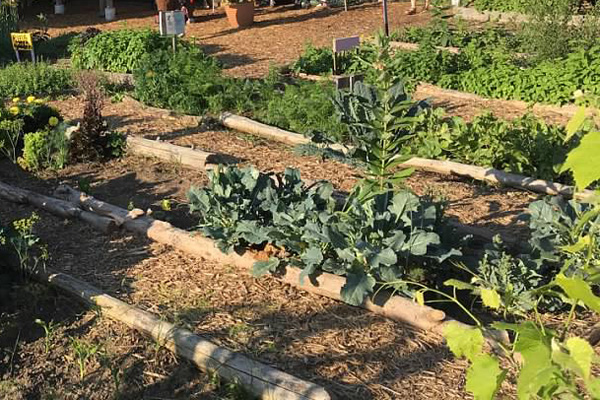Getting The City Blooming To Work
Things about City Blooming
Table of ContentsCity Blooming for BeginnersExcitement About City Blooming10 Easy Facts About City Blooming ShownNot known Facts About City BloomingCity Blooming Fundamentals Explained

As you walk the streets of the Bronx, Southside Chicago or East Oakland, you might see have actually also seen large stories of ripening fruits and veggies being harvested. What specifically are city farms and community gardens? Are they various? If so, just how? And a lot more importantly, how can you support them? Urban farming, metropolitan farming, or city horticulture is the technique of growing, processing and distributing food in or around urban areas.
Usually, city farming as a technique is a bigger financial investment than horticulture. There are many a lot more hours spent right into the minutiae of farming, from the plant strategy to the tending of your beds. This moment dedication handles a whole brand-new definition once you realize the goal that is being functioned towards and dedicated, particularly that of getting an abundant yield of plants to be taken in.
A neighborhood garden is a single parcel gardened jointly by a team of individuals. Neighborhood gardens make use of either private or common plots on exclusive or public land while generating fruit, veggies, and/or plants expanded for their appealing appearance. The standard model here is that a large team of people each contribute a relatively small amount of time to working their very own plot, and obtain the fruits of their labor consequently.
City Blooming - Truths

, and neighborhood companies by assisting them establish and grow their own gardens. The distinctions in between neighborhood garden and city ranch are nuanced, though in the end the same standard task takes placefood plant growing however within various organizational structures - home and garden.
Urban ranches are generally much more organization and technology oriented, with the primary function of making the most of yields and offering produce. Commercial metropolitan farms are commonly targeted at expanding production on typically little acreage with advancements in technologies such as aquaculture, hydroponics, and greenhouses and may partner with a commercial kitchen to create locally-produced value-added items such as jams and sauces.
City Blooming Things To Know Before You Get This
The fruit and vegetables is usually grown on a much smaller sized range and is taken home to eat at home or to share. By giving much needed green rooms in penniless, concrete metropolitan areas, they enable the advantages of yard gardening to those doing not have backyards, and work as outstanding instances of self-organization and area advocacy.
Some area gardens, usually in urban areas, relocate into growing for business usage while some metropolitan ranches open up their land for more socially conscious advantages. No matter of how you define and separate the 2, they are both favorable forces for good in cities around America and the world.
As every one of Little Axe Peppers' warm sauces are sourced with peppers from community gardens, your purchases directly assist money these neighborhood projects (https://www.slideshare.net/danielnold94107). Take component in the revolution by.
A close friend of mine just recently commented in a conversation concerning gardening that "It's interesting, I have actually always believed that farming as a technique is somewhat like horticulture. As I invested even more and more time in my Urban Agriculture class I have actually come to realize that to say that gardening is a mini extension of farming would certainly be a little bit of stretch.
City Blooming Fundamentals Explained
They both rotate around the treatment of plants for some goal that can be nourishment, profit or simply the enjoyment of the craft. They both call for a financial investment on top of a time financial investment, something that a whole lot of people in our rapid paced life do not have a lot of.
We can see that the similarities are plentiful, but are the distinctions enough to develop a difference? As a trainee at NYU get redirected here I have the possibility to collaborate with the leave It Better Structure, a group that educates standard nourishment and gardening to secondary school pupils. http://go.bubbl.us/e31e8c/192c?/City-Blooming. This experience provided me a thorough foray right into the globe of amateur gardening past what the majority of people have been in call with
With these in hand, I can safely claim that these two activities are fairly frankly different monsters. Farming as a practice is a bigger investment than gardening. There are numerous more hours invested right into the minutiae of farming, from the crop plan to the often tending of your beds. This time around commitment takes on an entire brand-new definition once you recognize the objective that is being worked in the direction of and dedicated, namely that of gaining an abundant return of crops to be consumed.
The average gardener deals with his tasks as a duty rather than a necessity and therefore distinguishes his or herself from the farmer. However with this distinction in hand, they are both soothing and soothing workouts that anyone can grab, which on its own should be a promotion for both.
City Blooming Fundamentals Explained
Something failed - eco-friendly practices. Wait a moment and try once again Attempt again